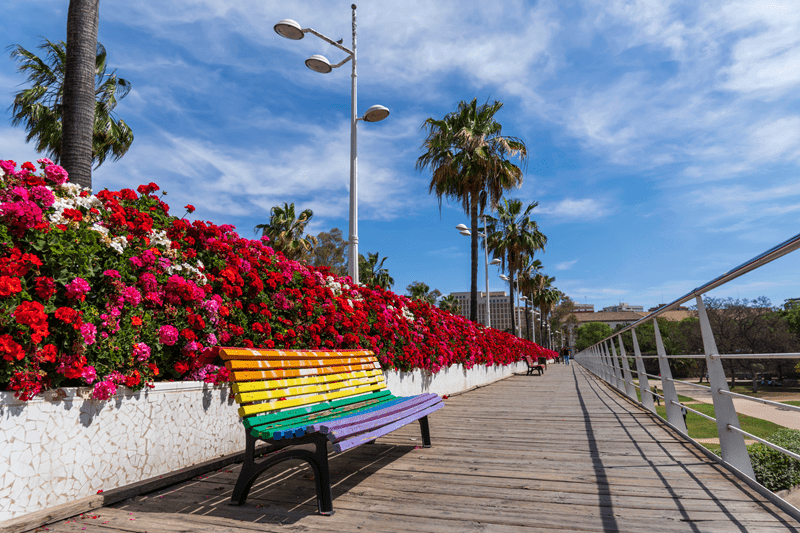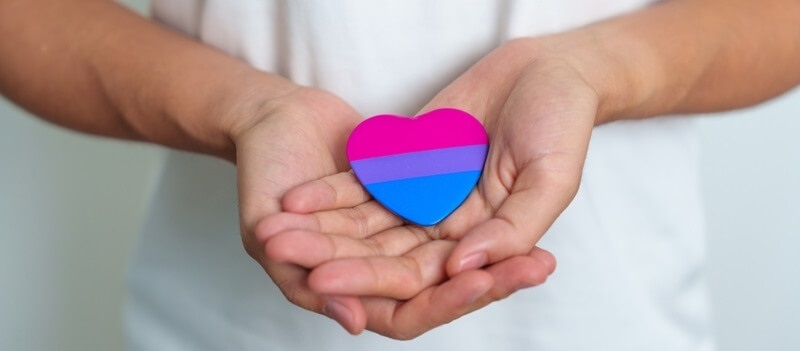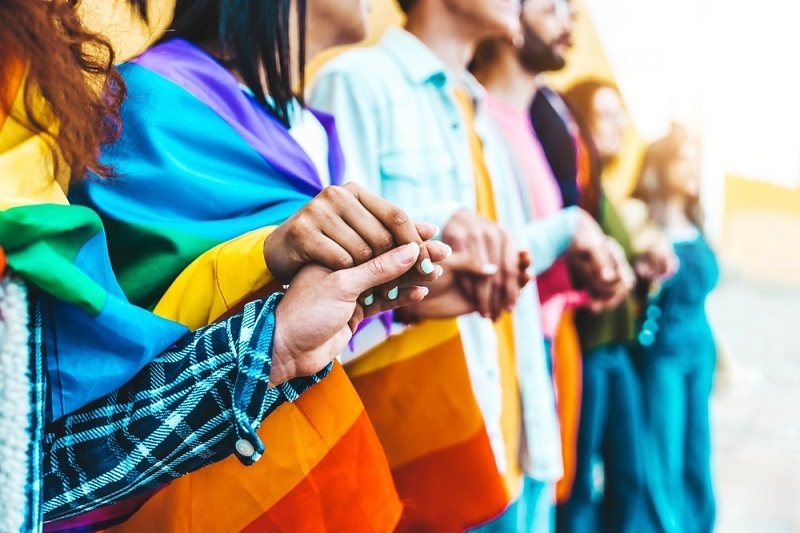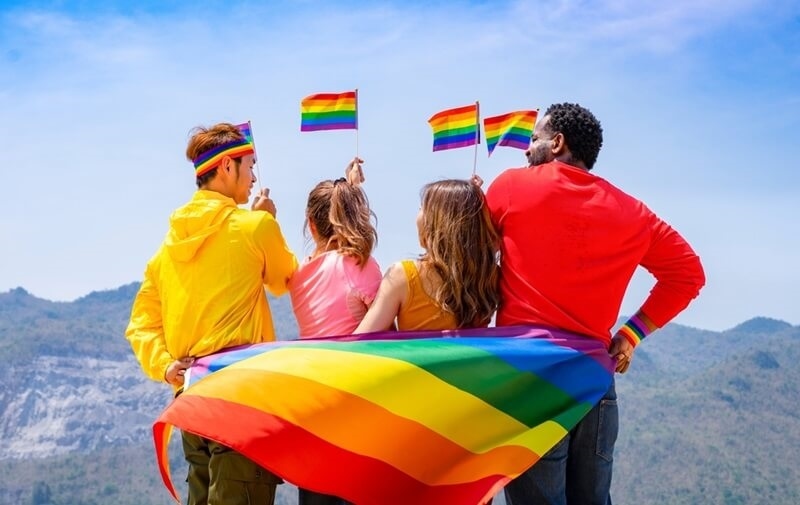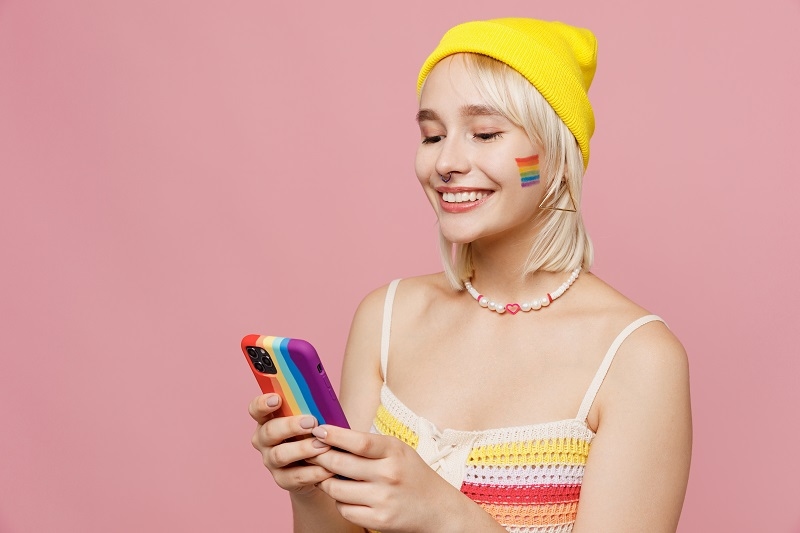8 Unknow Facts About the Pride Flag that You Must Know
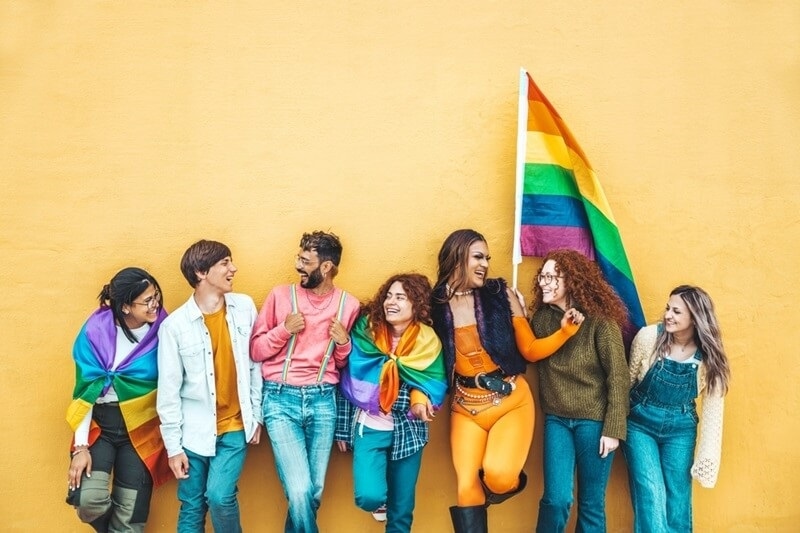
The pride flag is more than just a normal flag because it is a symbol of identity, resilience, and transformation that has happened over the decades.
Even though, many people recognize its bright colors and what it represents at first glance, but only a few know the lesser-known facts and meanings.
This blog will cover the eight things that you did not know about the pride flag.
8 Hidden Facts About Pride Flag
The below list will help you with the eight facts that most people do not know about the LGBTQ+ pride flags:
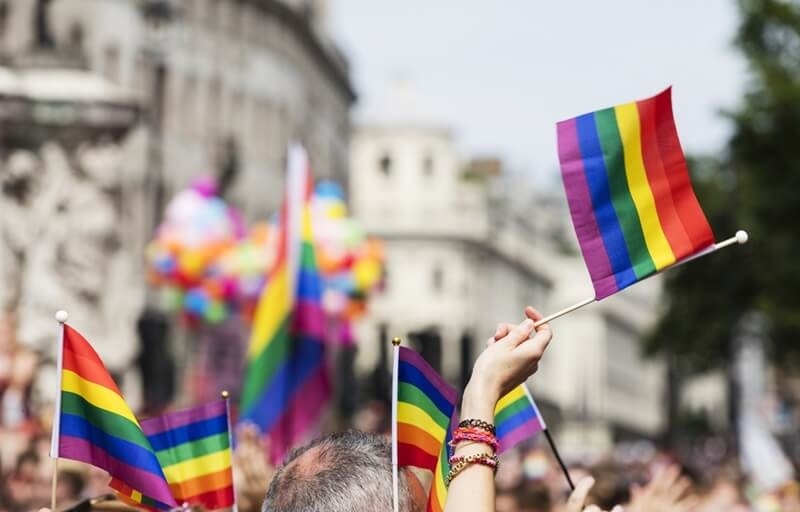
1. Pride Flags Were Not Supposed to be a Rainbow
The pride flag looks like a simple rainbow, but the original design had specific intentions with each color chosen specially to reflect deeper meanings.
- Red: Life
- Orange: Healing
- Yellow: Sunlight
- Green: Nature
- Blue: Serenity
- Violet: Spirit
Interestingly, the oldest versions also had pink for sexuality and turquoise for magic and art. These colours were removed because of practical reasons like fabric availability. The widely recognized pride flag started with eight stripes with every colour defining something.
2. Pride Flags Are Not One-Size-Fits-All
People think pride flags are only in rainbow shades, but this term has expanded to include a wide spectrum of flags over the years to represent various identities within the LGBTQ+ community.
Here are just a few notable examples:
- Bisexual Pride Flag: Pink, purple, and blue stripes to represent attraction to same and different genders.
- Non-Binary Pride Flag: Yellow, white, purple, and black with each color reflecting gender identities outside the binary.
- Asexual Pride Flag: Black, grey, white, and purple to explain different aspects of the asexual community.
- Intersex Pride Flag: A yellow field with a purple circle in the center that symbolizes wholeness and individuality.
The world of pride flags continues to grow and each one gives visibility to people who may have felt overlooked earlier.
3. Gay Pride Flag is a Global Symbol
The term gay pride flag is usually used to describe the rainbow version, but it is important to remember that it began as a specific response. This flag first appeared in the late 1970s as a sign of visibility and unity for gay men during a period of discrimination.
This flag has change with time into something much broader and it is now not only a symbol for gay pride, but it is a recognized emblem of LGBTQ+ community. Its meaning has grown to include love and acceptance across all sexualities and gender identities.
It is remarkable that this one design started a global movement in flags and became a symbol that transcended borders, languages, and even generations.
4. Lesbian Pride Flag Has Its Own Evolution
The lesbian pride flag has gone through major changes than most people know. There was no universally agreed-upon design previously. However, in the 2010s, when a lipstick lesbian version gained attention that featured pinks and red hues was seen as a narrow representation of the community.
Later a more detailed flag was created with warm tones of orange, white, and shades of pink. Every stripe in this flag represented something:
- Dark Orange: Gender non-conformity
- Orange: Independence
- Light Orange: Community
- White: Unique relationships to womanhood
- Pink: Serenity and peace
- Dusty Pink: Love and sex
- Dark Rose: Femininity
Even though this flag has been not officially adopted by every lesbian group. It has grown in popularity and now serves as a unifying symbol for many across the lesbian community.
5. Trans Pride Flag Carries a Subtle Message of Harmony
The trans pride flag is instantly recognizable with its light blue, pink, and white stripes. But there’s a clever design detail that often goes unnoticed.
The layout of the flag is symmetrical. No matter which direction it's flown — right-side-up or upside-down — it always looks correct. This was intentional. It reflects a message of stability and affirmation, even in times of confusion or transition.
Each color represents part of the transgender experience:
- Blue: Traditional color for boys
- Pink: Traditional color for girls
- White: Those who are transitioning, gender-neutral, or identify outside the binary
The flag’s message is quiet but powerful — no matter how someone’s journey looks, their identity is valid and supported.
6. Pride Flags Are Now Recognized by Governments and Landmarks
The symbolic weight of the pride flag has reached far beyond community use. In recent years, governments and public institutions across various countries have begun flying pride flags from official buildings.
It’s more than a symbolic gesture. It’s a statement that inclusion matters at the highest levels.
From embassies to city halls, and from state capitals to historic landmarks, the presence of pride flags in public spaces affirms that LGBTQ+ people belong — not just in parades and celebrations, but in every aspect of civic life.
7. Pride Flag Has Entered Space
One of the more surprising facts about the pride flag is that it has — quite literally — left Earth.
In recent years, individuals and organizations have launched the flag into the stratosphere using high-altitude balloons. These symbolic gestures are often filmed, shared online, and used to spread a message: LGBTQ+ rights are universal, and visibility should know no boundaries.
While symbolic, it shows how far the flag has come — from a street protest to the edge of space. That’s no small journey.
8. Future of the Pride Flag Is Still Unfolding
As new identities emerge and more people find the language to describe who they are, the design and diversity of pride flags will likely continue to grow.
Already, new hybrid versions and intersectional flags are being created to represent overlapping experiences — such as being LGBTQ+ and a person of color, or being neurodivergent within the community.
This constant evolution is part of what keeps the pride flag — and the many pride flags that have followed — so powerful. They are not static because they reflect the living, breathing nature of the community itself.
Final Reflection
The pride flag may seem like just a design of colored stripes at first glance. But the truth is, it holds layers of meaning, stories of struggle, and a rich history of transformation. From the gay pride flag to the trans pride flag, and from the original rainbow to today’s diverse spectrum of pride flags, each version tells a story and not just about one’s identity, but of progress.






